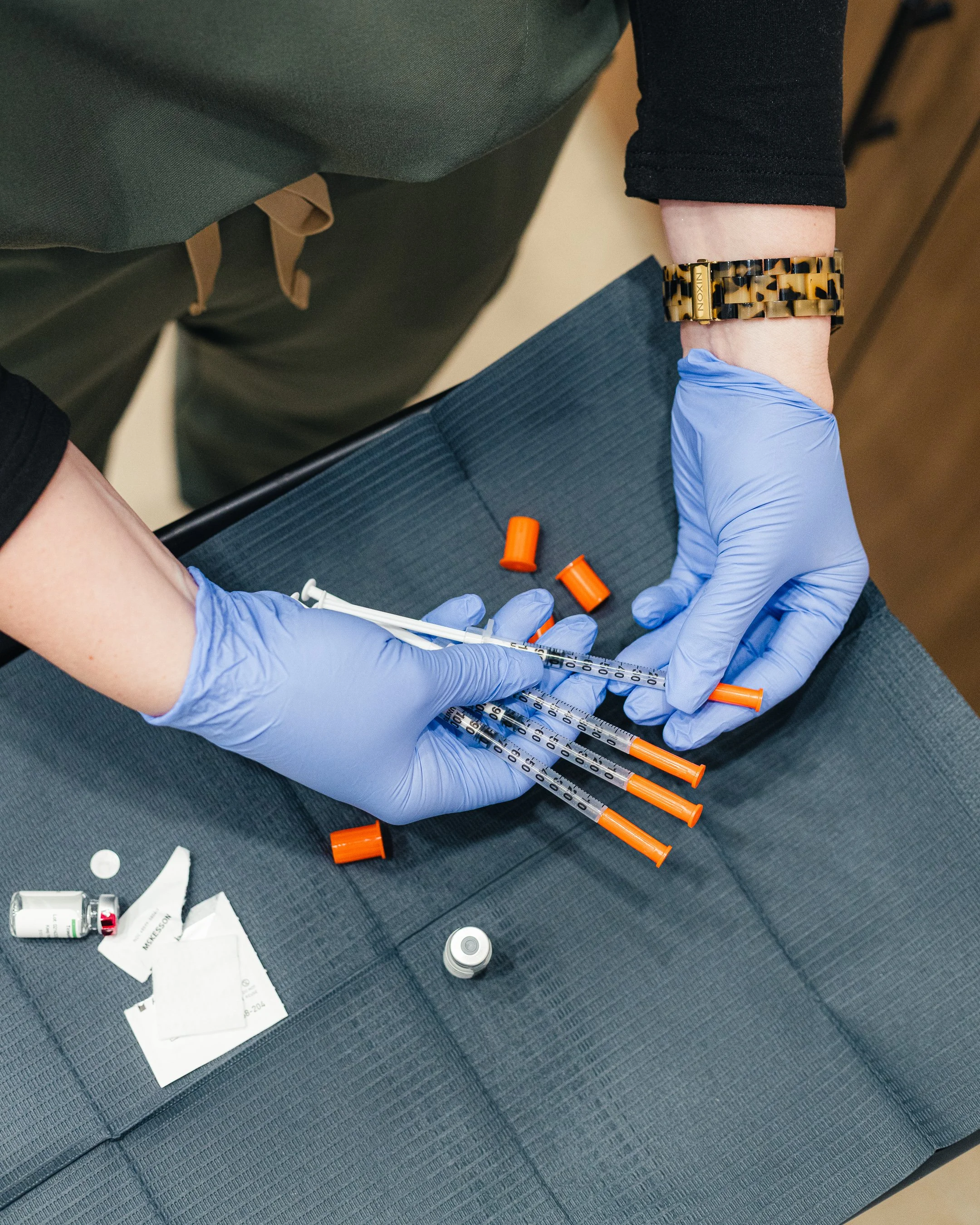Breaking a Weight Loss Plateau While on GLP-1
GLP-1 medications have transformed the way many people approach weight loss. With powerful appetite regulation, improved insulin response, and steady fat loss, it can feel like a dream come true — until the weight loss slows down, or worse, stalls completely.
If you’ve hit a plateau while on these medications, you're not alone — and it's not a sign of failure. Plateaus are a normal part of the journey, and there are strategic ways to move past them without over-restricting or losing motivation.
Why Do Weight Loss Plateaus Happen — Even on GLP-1s?
Despite the power of these medications, your body is still biologically wired for survival — and weight loss triggers adaptation.
Common reasons for plateaus:
Metabolic slowdown: As you lose weight, your body burns fewer calories at rest.
Loss of lean mass: If you aren’t strength training, you may be losing muscle, which slows metabolism.
Appetite creep: Over time, the appetite-suppressing effects of GLP-1s can soften, especially at lower maintenance doses.
Caloric balance: Your body may be eating just enough to match what it's burning — halting further loss.
Habits slide: Old patterns like snacking, emotional eating, or skipping workouts may return without notice.
Step 1: Reconnect With Your Daily Habits
Before you make big changes, take stock. Ask yourself:
Am I still eating in line with my goals?
Are portions larger than they were when I started?
Am I eating more processed or convenient foods?
Am I drinking enough water? Sleeping well? Moving daily?
Tracking food, activity, or even hunger levels for just 3–5 days can help pinpoint subtle shifts.
Step 2: Boost Your Protein & Strength Training
Muscle is your metabolic engine — and preserving it is key during weight loss.
Aim for:
100–130g of protein per day, depending on your body size and goals
2–3 strength training sessions per week to build or maintain muscle
This helps keep your metabolism high, supports satiety, and makes your body more efficient at burning fat.
Step 3: Change Your Routine to Challenge Your Body
Just like your body adapts to lower calorie intake, it can also adapt to the same exercise or meal pattern.
Try:
Switching up your workouts (e.g., walking → intervals, yoga → strength)
Eating different types of whole foods to support micronutrient diversity
Resetting your eating schedule (without extreme fasting)
Sometimes, even a simple shift in routine can reignite progress.
Step 4: Manage Stress and Sleep
Hormones like cortisol and ghrelin (the hunger hormone) can work against your progress when you're:
Chronically stressed
Sleeping less than 6–7 hours per night
Not taking time to mentally reset
Build in time for rest, recovery, and mindfulness. Your metabolism will thank you.
Step 5: Revisit Your Dose or Medical Plan
If your plateau lasts 4–6 weeks or more with no change in habits, it may be time to:
Review your current dose of tirzepatide or semaglutide
Run lab tests (thyroid, insulin, nutrient levels)
Talk to your provider about adjusting medication or adding support like a registered dietitian, coach, or fitness plan
Everyone’s plateau point is different, and your care plan should match your body’s needs.
Final Thoughts: Progress Isn’t Always a Number
Your weight may stall, but that doesn’t mean you’ve stopped making progress. Are you sleeping better? Feeling stronger? Less obsessed with food? These non-scale victories are often the most meaningful — and sustainable.
Tirzepatide and semaglutide are tools, not magic. They give your body the chance to reset — but lasting weight loss comes from the habits you build and the mindset you carry into maintenance.


